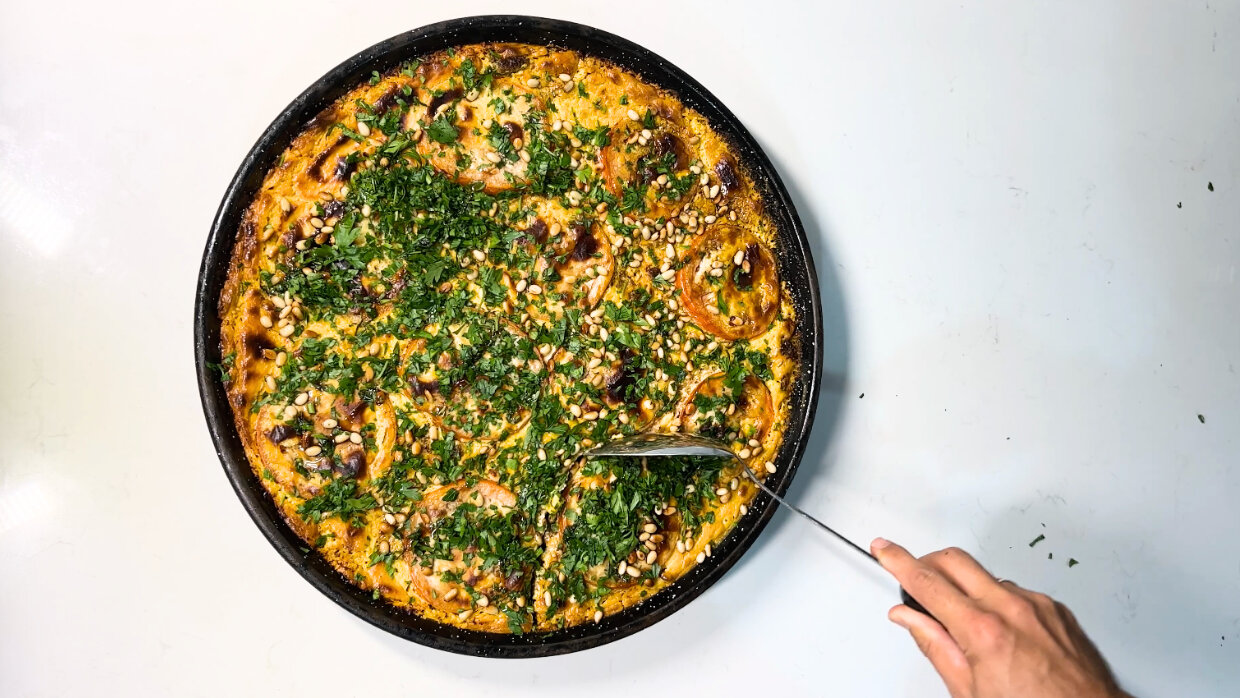There is an almost universal custom to eat dairy foods on Shavuot, the holiday that celebrates the giving of the Torah. Arguably, the most popular food on Shavuot menus is cheesecake.
From where did this custom of eating cheesecake and other dairy foods, like creamy potato-broccoli soup made with butter, blintzes, lasagna and ice cream, on Shavuot come? There are a few explanations.
1. Learning To Keep Kosher
One goes all the way back to Adam and Eve in the Garden of Eden. Today, we would say that Adam and Eve were vegans, subsisting on whatever foods grew from the ground.
Eating meat wasn’t even a thing for ten generations - until the time of Noah. Along with permission to eat meat came a number of restrictions.
Meat-eating was never meant to be a free-for-all. It was always conditional and, in a way that might surprise anyone who has ever attended a meat-heavy Shabbat or holiday meal, eating meat was originally intended by God to be a temporary concession.
In the approximately 800 years between Noah and Moses, meat-eating continued. And then, when God gave the Torah to Moses on Mount Sinai, the laws of keeping kosher were given. Among the newly-announced kosher laws was the requirement that meat foods had to be cooked and served separately from dairy foods.
Given that the people needed time to prepare separate pots for cooking meat, they temporarily stopped eating meat immediately after receiving the Torah. In the interim, they ate dairy foods. We remember this on Shavuot, when we celebrate receiving the Torah.
2. Baby Moses Refused To Drink Egyptian Milk
A second reason also relates to Moses. Jewish tradition teaches that Batya, the daughter of Pharaoh, saved his life by retrieving his basket from the Nile river. This happened on the sixth of Sivan, the same date in the Hebrew calendar that we celebrate Shavuot.
Batya initially brought the infant Moses to an Egyptian wet nurse, but he refused to nurse from her; he would only nurse from an Israelite woman. This association with mother’s milk is another reason we eat dairy foods on Shavuot.
3. The Numerical Value of Milk
A deeper reason is that the numerical value of the Hebrew word for milk (chalav) is 40. This number hints to the 40 days that Moses spent up on Mount Sinai before he brought the Torah down to the Israelite nation.
4. Moses Taught That Milk is Kosher
A fourth reason for the custom relates to the Seven Noahide Laws. As their name suggests, these were seven laws for all of humanity that were already known in the time of Noah; the Noahide Laws existed long before the Torah was given.
One of the seven Noahide Laws is the prohibition of eating a limb from a live animal. Before the Torah was given, the Israelites were unsure about whether drinking milk taken from a live animal was a violation of this law, so they completely abstained from all dairy foods.
When the Torah was given, Moses clarified for the people that drinking milk was permissible. Thus, we have the custom to eat dairy foods on Shavuot to celebrate the anniversary of receiving permission to expand our diets to include milk-based foods.
5. What Milk and Torah Have in Common
Finally, as is well-known, the Torah refers to the Land of Israel as "a land flowing with milk and honey." Similarly, learning Torah, which we do the night of Shavuot, offers qualities associated with both milk and honey. Just as milk offers nourishment for the body, Torah study offers nourishment for the soul. And just as honey is a source of sweetness for the body, studying Torah brings a spiritual sweetness to the life of a Jew.
The tradition of eating a variety of dairy foods on Shavuot is a tasty way to help us connect with Jewish history.
Even if you’re lactose intolerant, or if dairy foods just aren’t your thing, there’s one other food-related custom on Shavuot that might appeal to you. Some families bake and enjoy challah or cookies in Shavuot-themed shapes, such as a Torah scroll or a crown to represent the ornamental silver crowns on a Torah scroll or a ladder to represent Moses climbing to the top of Mount Sinai or even the shape of Mount Sinai itself.















